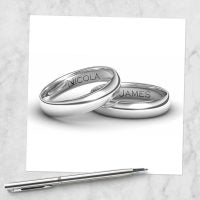Everything You Need to Know About Formal Wedding Invitations

Getting married is one of life’s most wonderful occasions, and it can be celebrated in countless ways. There’s no rule that says your wedding must be a formal affair — if you want to get married barefoot on a beach or in a quiet garden ceremony, that’s entirely up to you! But if you’ve always dreamt of a grand, traditional celebration, complete with a beautiful ceremony, a stunning venue, and elegant attire, then a formal wedding invitation is the perfect way to set the tone for your special day.
Your wedding invitation is often the first impression your guests will have of your wedding. It doesn’t just provide the key details — it also communicates the style, tone, and level of formality they can expect. Here’s everything you need to know about what makes a wedding invitation formal and how to get the wording just right.
Traditional Wording: The Bride’s Parents as Hosts
Traditionally, it’s the bride’s parents who issue formal wedding invitations. The wording often follows a set structure, such as:
“Mr and Mrs A. B. Ceedee request the pleasure of your company at the marriage of their daughter Effie to Mr Zach Whyvee…”
This traditional format conveys a sense of grace and sophistication. If titles apply — such as Dr, Sir, or Lady — these are included for an added touch of formality.
Alongside the invitation, RSVPs are usually directed to the bride’s parents as well. This allows them to keep track of attendance numbers and dietary requirements, helping to make the catering process seamless.
Modern Alternatives: The Couple Takes the Lead
In modern weddings, many couples prefer to handle their own invitations — especially when they’re planning the event themselves. If you and your partner are hosting, the wording can be easily adjusted. For example:
“Effie Ceedee and Zach Whyvee request the pleasure of your company at their marriage…”
This contemporary approach reflects today’s trends while still maintaining the elegance of a formal invitation.
If parents are helping to fund the celebration, it’s often considered courteous to allow them to invite a small number of their own guests too. This helps everyone feel included while giving the couple full creative control over the design and guest list.
What Makes a Wedding Invitation “Formal”?
Formal wedding invitations are all about presentation, tone, and attention to detail. From the quality of the card to the type of wording you choose, every element should reflect the elegance of the occasion.
Here are a few key features to consider:
Classic design: Opt for timeless motifs such as florals, filigree borders, or embossed details.
Elegant fonts: Calligraphy or serif typefaces give a refined, traditional feel.
Premium materials: Choose high-quality card stock, foil accents, or ribbon embellishments.
Consistent stationery suite: Match your invitations with RSVP cards, guest information inserts, and thank-you cards in the same design.
If you’re short on time but still want a polished look, ready-to-write wedding invitations can be a brilliant option. They’re beautifully designed and easy to personalise — giving you a formal finish without the wait or extra cost.
Setting the Tone for a Beautiful Day
No matter who sends them or how they’re worded, your wedding invitations should capture the spirit of your day. A formal wedding invitation signals elegance, tradition, and thoughtfulness — setting the perfect tone for a day filled with love, family, and celebration.
At Dotty About Paper, we offer a wide range of formal wedding invitations to suit every couple’s vision. From classic to contemporary, each design can be personalised to reflect your style, ensuring your guests receive something truly special.
Recommended Articles
UPDATED ON
November 06, 2025








